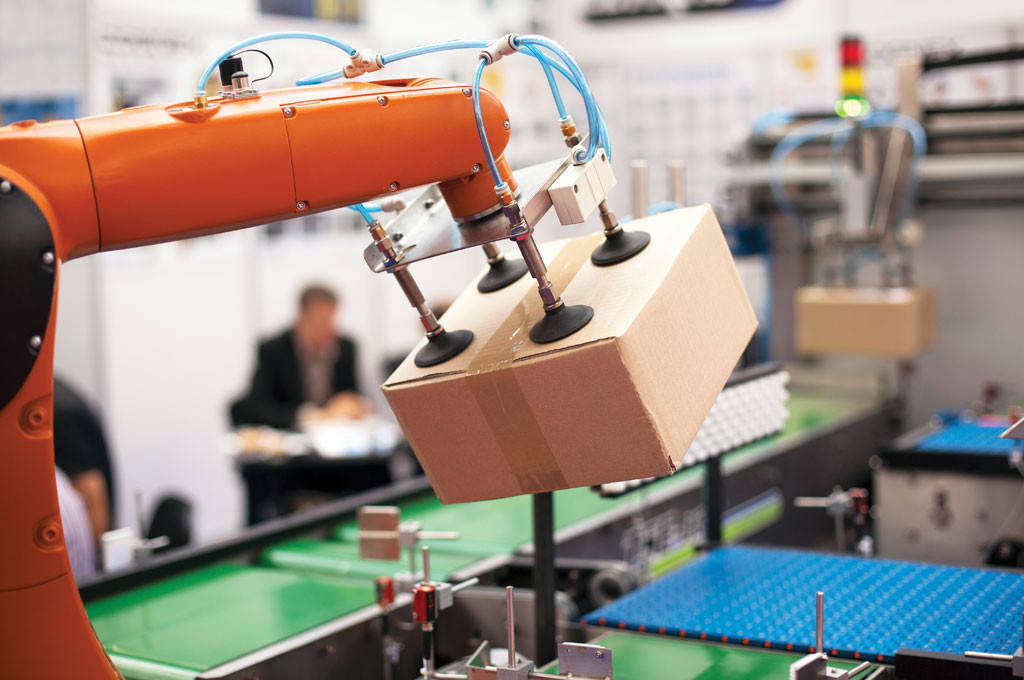The Winter 2016 issue of Knowledge Leader takes on a subject that some might find out of place in discussions about commercial real estate: robotics. Most people know that robots have been a part of industrial production for the last fifty years or so. With that in mind, it’s not too difficult to connect the dots between the rise of robotics and industrial properties. In the last few years, a new breed of robot has developed that will make that connection even more apparent.
Download the Winter 2016 edition of Knowledge Leader magazine
The use of robotics in industrial production dates back to 1961, when the Unimate was introduced at a General Motors plant in New Jersey. Since then, robots have branched out beyond automotive manufacturing into countless types of manufacturing and assembly, but always with one specific caveat: for safety reasons, robots had to be kept separate from humans on industrial floors. This meant putting robots behind safety screens or in cages so that the unthinking, unknowing machines wouldn’t accidentally injure human workers in the process of executing their duties.
A new type of robot is breaking with that convention. Collaborative robots work alongside humans, upending the decades-old convention of keeping mechanical workers separate from flesh-and-blood staff. This is made possible by improvements in sensor technology that allow the robots to check themselves before putting a human in danger, and it is has huge implications for industrial real estate—particularly in the warehousing business, which is booming in an era of online retail served by superior worldwide logistics.
In the Winter 2016 issue of Knowledge Leader, we take a look at the companies that are producing advanced robotics (Intelligrated, Fetch and Kiva Systems) and the companies that are using them (Widmer Brothers Brewing, Amazon, The Hershey Company and Kelly-Moore.) Download it today.

 Colliers Insights Team
Colliers Insights Team

 Baily Datres
Baily Datres Mike Otillio
Mike Otillio
 Jesse Tollison
Jesse Tollison
 Patrich Jett
Patrich Jett